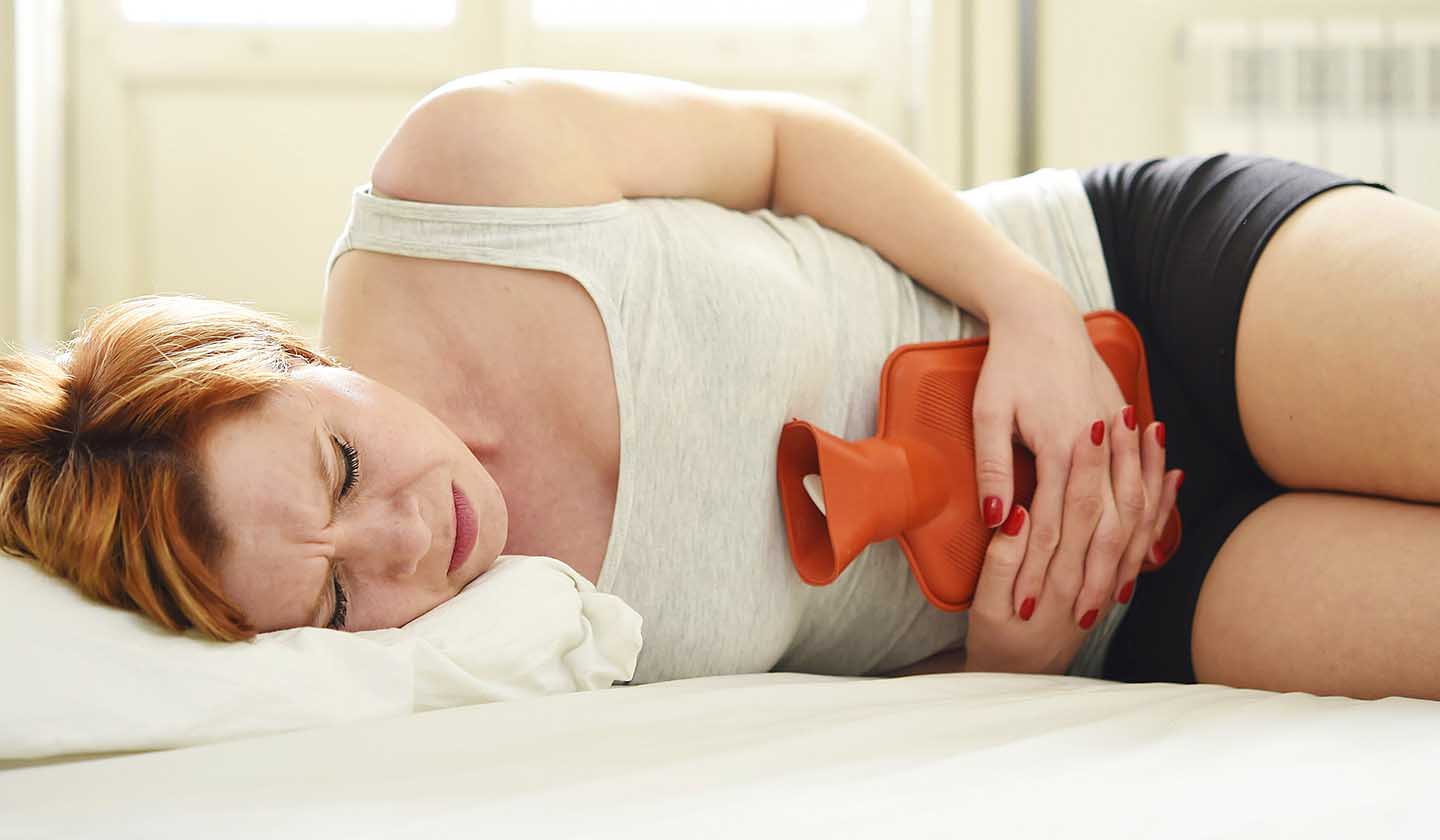Gynecology
That suffering every month? You can control

Dysmenorrhoea is the name given to the pelvic or lower abdominal pain that occurs during a woman's menstrual period, more commonly known as menstrual pain or colic.
About 50 to 70% of women have symptoms or have already had symptoms of dysmenorrhoea and about 10% have severe complaints that interfere with their daily activities.
The prevalence is high especially among young women and adolescents and the symptoms are more intense in the first two or three days of menstruation, and can be quite uncomfortable, interfering even with daily tasks.
Given that this is a frequent gynaecological complaint, it is worth addressing the topic, especially because dysmenorrhoea can hide a health problem.

Dysmenorrhoea can be primary or secondary.
Primary dysmenorrhoea:
It is a functional dysmenorrhoea that is characterised by the absence of pelvic gynaecological disease, and it is more common among adolescents. It usually occurs one or two years after the first menstrual period (menarche), with the main symptoms being a pelvic pain that can radiate to the lower back or thighs and which may be accompanied by fatigue, nausea, vomiting, dizziness, headache, or diarrhoea.
The pain results from ischaemia (blood supply) and uterine contractions due to the release of prostaglandins and other inflammatory mediators produced by the endometrium. These uterine contractions are felt as pain in the pelvic region and their intensity can vary between months.
Symptoms tend to decrease with age and especially after pregnancy.
Secondary dysmenorrhoea:
It is characterised by the presence of a pelvic pathology and it usually occurs after the age of 30. The most common causes for this type of dysmenorrhoea are:
- Endometriosis (growth of endometrial tissue outside the uterine cavity)
- Ovarian cysts
- Myoma (benign tumour of the uterus)
- Infections

Women often devalue pelvic pain because they think it is associated with the menstrual period. As a result, they end up experiencing dysmenorrhoea symptoms for years, without talking to their doctor. Therefore, you should talk to your doctor if:
- Severe pain persists after the use of painkillers;
- Pain is severe and persistent during the entire menstrual cycle;
- You have never suffered from dysmenorrhoea and complaints have only come up recently;
- The pain is accompanied by a menstrual flow more abundant than usual or there is no relation between the pain onset and the menstrual cycle.
Risk factors
Studies have shown that some factors can contribute to the increase in the prevalence of dysmenorrhoea and its severity.
- Early age at menarche
- Long and abundant menstrual periods
- Smoking
- Depression, anxiety
- Family history of dysmenorrhoea
- Intrauterine device
- High BMI

Pharmacological treatment
Some medications can relieve menstrual pain. Ask your pharmacist for advice on the best treatment options for your symptoms.
- Non-steroidal anti-inflammatory drugs - NSAIDs (relieve pain by inhibiting prostaglandins);
- Ibuprofen
- Acetylsalicylic acid
- Analgesics - paracetamol (effective in cases of mild to moderate pain);
- Oral contraceptive - of medical prescription (they inhibit ovulation, decrease prostaglandin levels during the menstrual period and reduce the menstrual flow, reducing pain in many cases).

Non-pharmacological treatment
Some studies have shown that a healthy lifestyle helps to relieve dysmenorrhoea symptoms. Here are some recommendations.
- Practice physical exercise regularly (the release of endorphins causes a feeling of well-being and increases the pain threshold);
- Try to reduce stress;
- Eat a balanced diet;
- Apply heat (for example, a hot water bag) on the lower abdominal region and massage gently in circular motion (it enables muscle relaxation).
If you suffer from menstrual pain, do not underestimate it, and discuss the issue with your doctor or gynaecologist so that he/she can assess the causes and suggest a treatment that is adequate for your case.
Sources
iSaúde
Farmácia Distribuição Magazine
Também lhe poderá interessar
Nervous system
What about when your head explodes and all you want is dark and quiet?
Urinary tract






